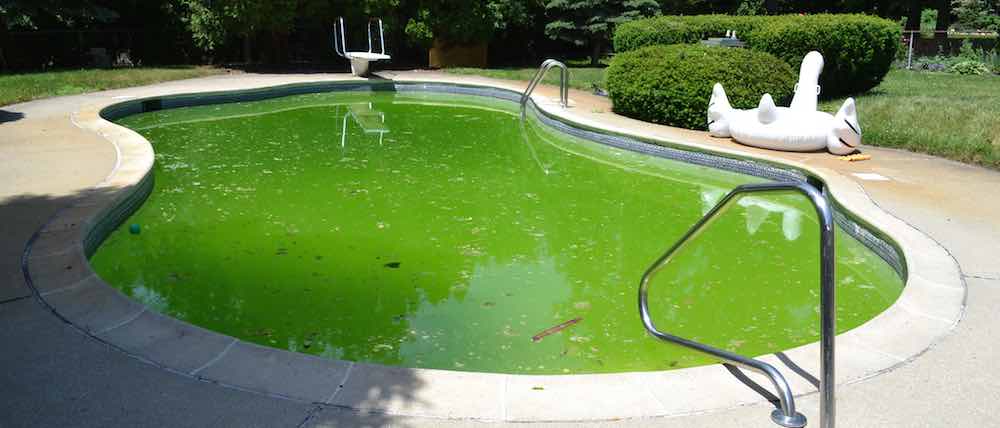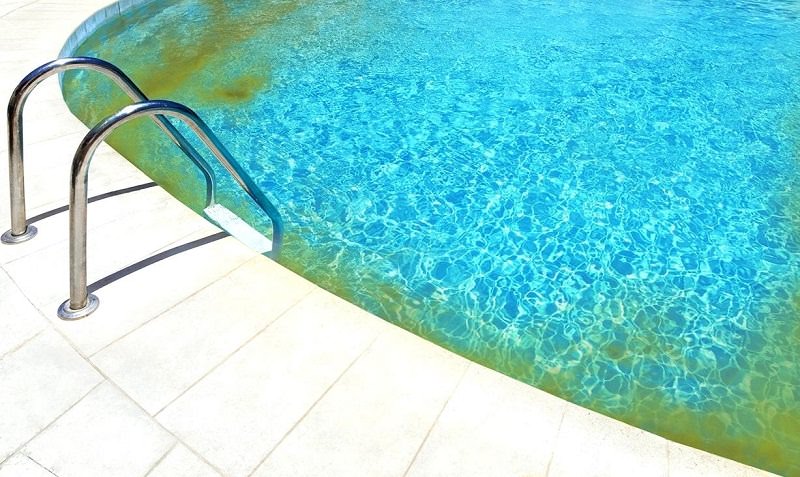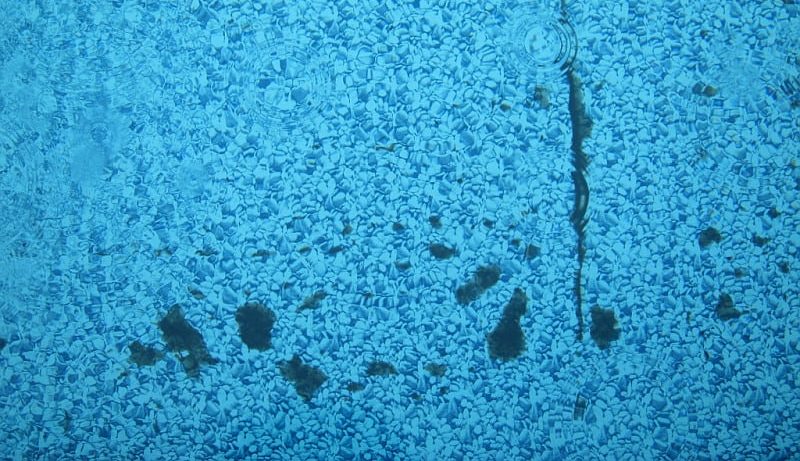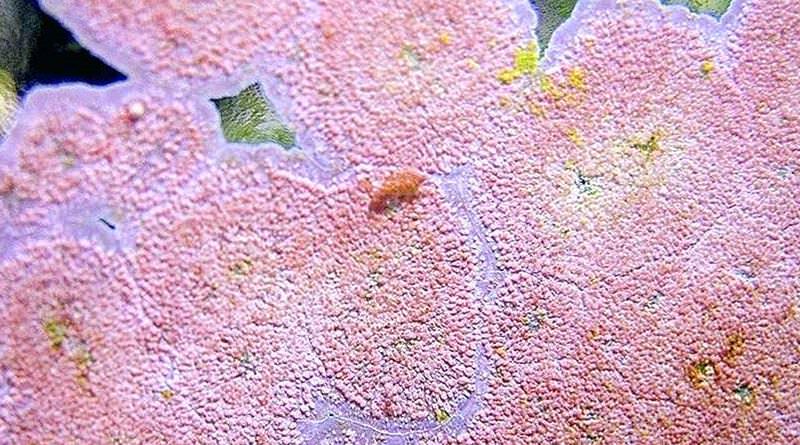Table of Contents
You probably learned about algae back in a science class in school. Algae are simple, one-celled plants. Over 20,000 varieties of algae exist today.
You will see algae in almost every swimming pool or spa. Pink, black, brown, yellow, or green slime that may look “hairy” is really algae growing on these surfaces. You notice it more often in damp places where there is not much air circulation. In fact, a damp area that does not receive much direct sunlight provides a perfect place for algae to grow quickly.
Running a pump in the pool or spa will decrease the growth of algae. Test the water frequently and add what is needed to maintain the proper balance. Even though the floats look inviting floating in the pool, they really should be removed along with grass and leaves. Maintaining a clean pool requires some effort on your part.
The various types of algae require different courses of action. These are explained below.
Green Algae in Pool

Green algae – the scientific name for green algae is chlorophyte. This is that common green slime often seen on spa and pool surfaces. When you notice the small green clusters showing up in corners and on the steps, it is time to take action. This type algae grows quickly and can increase drastically in just 24 hours.
Attacking green algae with a brush will get it off the surface, but it will not get rid of it. The best way to get rid of it is to “shock” the pool or use a process called superchlorination. This sanitizes the pool that might stubbornly resist the normal chlorination process. Though regular pool and spa maintenance, you might be able to avoid a green algae attack.
The most effective green algae treatment: Applied Biochemists Swimtrine Plus Green Mustard Algea 406103
Yellow Algae in Pool

Yellow algae – this type of algae has a yummy name, but it is not so appetizing! Because of its yellow, brown appearance, this is called “mustard” algae. Scientifically speaking, it is phaeophyta and does not grow and spread as quickly as green algae, but is it much more difficult to destroy.
Just like green algae, yellow algae has a hairy or furry appearance. Yellow algae is not easily removed by brushing. However, brushing exposes the algae that is underneath the surface layer of slime. Yellow mustard is destroyed by superchlorination and meticulous maintenance.
The most effective yellow/mustard algae treatment: United Chemicals Yellow Treat
Black or Blue-Green Algae in Pool

Algae called black or blue-green is really the same species. This type of algae is usually found in open water such ponds, lakes, and streams. However, it may be found in a pool or spa that has been neglected. When cleaning a pool, the presence of black or blue-green algae is a critical situation.
Black or blue-green algae dies not have the outer slime layer that protects the algae beneath it. When black algae takes over a surface, it infiltrates the surface. What starts as a black spot grows quickly. Black algae requires a brush made of stainless steel to remove it. This type of brush breaks the shell of the algae so that chemicals can reach the algae.
Scientifically, blue-green algae was once known as cyanobacteria. Here is the best product for removing blue-green algae Rx Clear
Pink Algae in Pool

The pink-red line around the swimming pool at the water level is really bacteria – pink algae. Pink algae is attracted to the plastic swimming pool surfaces. It is often seen with a fungus called white mold. This type of algae is probably the easiest to destroy. Frequent brushing, cleaning, and sanitizing keeps pink algae taken care of. When pink algae starts growing quickly, use a calcium hypochlorite shock to get it back in check.
The most effective pink algae treatment: United Chemicals PT-C12 Pink Pool Treat Algaecide